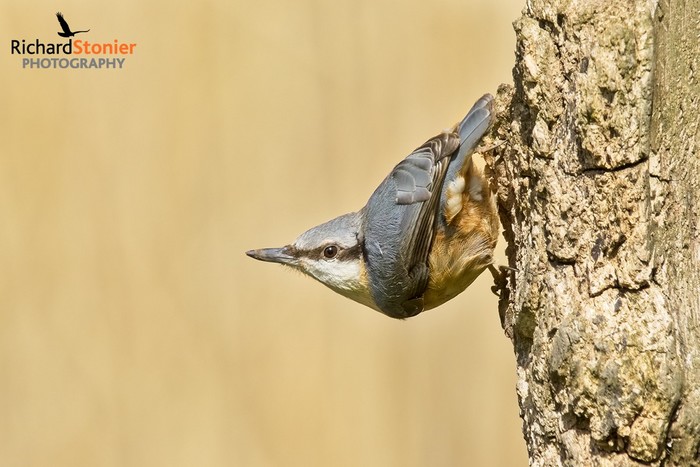Birdlife in Historic Parks Proves Surprisingly Resilient
A 30-year comparison finds stable species richness, despite major changes in management.

Three decades of change in Europe’s historic parks
Leach’s Storm-Petrels lead extraordinary lives, travelling hundreds or even thousands of kilometres across the open ocean before returning at night to their burrows to feed a single chick. These long-lived seabirds must carefully divide the energy they bring back from the sea between their own needs and those of their growing young.
The survey re-examined breeding birds in ten Czech manor parks first monitored in the mid-1990s and again in 2022–23. Despite major changes in management since the post-communist restoration era, including intensive mowing and renewed landscaping, larger parks retained virtually the same level of overall bird species richness as they did three decades ago.
Beneath that stability, however, the structure of the community has changed, with ground-nesting birds all but disappearing.
Old trees underpin stable bird richness
One of the study’s clearest findings is the enduring value of veteran trees. Hole-nesting birds were the dominant nesting guild in every park surveyed, benefiting from the abundance of old trunks, natural cavities and large canopies that define the traditional English landscape park style.
Species such as Great Spotted Woodpecker, Blue Tit, Nuthatch and Redstart continued to breed in good numbers. These birds rely heavily on cavities, and the long-term continuity of large old trees appears to have helped maintain high nesting opportunities.
In larger parks – those over 3 hectares – overall bird richness in 2022–23 was almost identical to the 1990s, with between 31 and 39 species shared between periods in the biggest sites.
Small parks show gradual species loss
While the headline for larger parks is one of stability, the smaller sites told a different story. Parks below around 3 hectares showed modest but consistent declines in species richness. The smallest park contained 29 breeding species in the 1990s but just 21 today.
These changes are subtle rather than catastrophic. Yet the pattern reflects growing evidence that small, isolated green spaces in cities struggle to maintain diverse bird communities over multiple decades, particularly when surrounded by urban development.
Still, the study found that habitat change surrounding the parks was minimal over 30 years, suggesting internal management changes, not landscape context, drove the losses.
Ground-nesters almost wiped out
The most striking shift across the entire study was the near disappearance of ground-nesting birds. In the 1990s, species such as Meadow Pipit, Tree Pipit, Crested Lark, Wood Warbler and Willow Warbler nested within some parks.
Today, only Chiffchaff remains as a regular ground-level breeder. All other ground-nesting species have vanished from the sites, likely due to two interacting pressures: intensive mowing of lawns and high predation rates from urban foxes and free-roaming domestic cats.
Modern park management emphasises neat lawns and frequent grass cutting – practices that leave no structural cover for open-cup ground nests and reduce insect availability. With cats estimated to kill billions of birds annually, ground-nesters face a near-impossible survival challenge in manicured urban greenspace.
Bird communities still dominated by common urban species
Across all ten parks, the most abundant species were the expected suite of urban-tolerant birds: Woodpigeon, Feral Pigeon, Great Spotted Woodpecker, Chaffinch, Great Tit, House Sparrow, Collared Dove, Starling and Blackbird.
These species form the backbone of many urban bird communities and appear resilient to long-term changes in park management. Despite turnover among rarer species, their dominance ensures that overall richness figures remain relatively stable.
Manor parks as biocultural biodiversity hotspots
Alongside their historical and architectural value, the study reinforces the role of historic manor parks as key biodiversity sites within Central European cities. Their combination of age, habitat heterogeneity and veteran trees makes them refuges for both common and specialist birds, even within heavily urbanised landscapes.
This aligns with the growing concept of Biocultural Diversity – the idea that cultural heritage sites can simultaneously act as reservoirs of natural heritage. In these parks, centuries of landscape design continue to shape ecological communities today.
With many European towns losing natural habitats in surrounding agricultural land, historic parks now serve as some of the most reliable long-term reservoirs of urban biodiversity.
What the findings mean for future park management
The study’s central message is that maintaining old trees and varied parkland structure supports long-term bird diversity – but that modern aesthetic preferences for tidiness come at a cost.
Managers could restore opportunities for ground-nesting birds by reducing mowing intensity, creating patches of rough grass, and mitigating predation pressure where possible. Without such changes, the loss of ground-nesters is likely to continue, even as overall bird richness appears stable.
For urban planners, the message is clear: historic parks are not just cultural assets, but ecological anchors. Protecting their mature trees and diverse structure will be essential for sustaining birdlife through the next 30 years and beyond.
November 2025
Read the full paper here
Get Breaking Birdnews First
Get all the latest breaking bird news as it happens, download BirdAlertPRO for a 30-day free trial. No payment details required and get exclusive first-time subscriber offers.
Share this story







